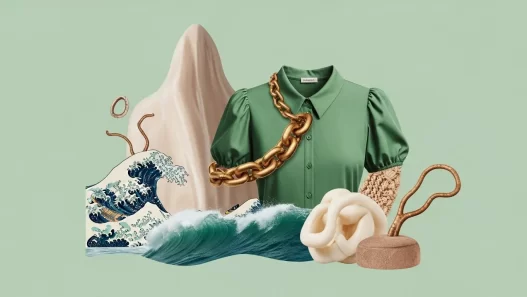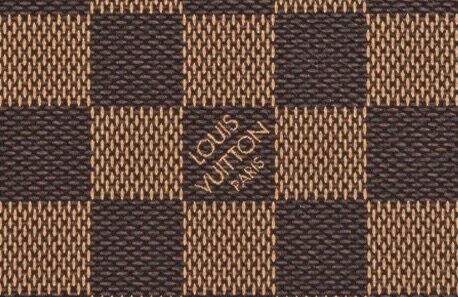The beauty of art is that it is timeless , it can blend with any time period and adapt to the trends, taste and preferences of a society. Fashion always flows from an amalgamation of culture, art, history and has not only opened doors for economies worldwide to engage with each other but also for a cultural exchange – a way to celebrate and learn about myriads of ancient cultures from around the globe. Forein multicultural influences on European fashion are visible from the middle ages, by way of Silk Route trade practices. Fashion is all about creativity and re-inventions and for it to thrive, diverse cultural exchange is a requisite – it is a means for nations to mutually enrich themselves. However, it isn’t plain simple as it sounds – we live in not just a divided world but a world with whose history exists in multitudes. In other words, there is a mainstream world (the West) and a marginalized world( the Orient), which itself is a construct by so -called developed nations. Indian art and craftsmanship and how it has influenced the global fashion markets has to be understood in light of the fact that India still remains a third- world country.
The significance of Indian textiles, handloom and craftsmanship took a new turn in the wake of socio-political unrest during the late 19th century industrialisation era. British intrusion of Indian markets and their eventual collapse invited resistance from Indian leadership as well as citizenry. The Swadeshi Movement, one of the biggest examples, was a way of regaining national identity as well as attaining economic self-reliance. The Gandhian idea of home rule or swaraj encompassed the idea of end of dependency on foreign materials in the long run. He propelled Indians to “spin, weave and wear their own khadi”. Khadi is handspun and handwoven cloth, which consequently came to be associated with the Indian identity. It is important to see what the 21st century fashion industry can learn from Gandhi. Gandhi travelled all over the world wearing loose white robes and a dhoti, a style statement asserting an Indianness, which was looked down upon at the time. There is a very intriguing essay by Peter Gonsalves titled: Half Naked Fakir — The Story of Gandhi’s Personal Search for Sartorial Integrity. The author explains that it is the exploration of truth through clothes. As a young man, Gandhi left India to study law abroad and not only emulated the British code of dressing but also saw it as the yardstick for respectable dressing. It was only during his stay in South Africa that he realised that even the Britishified Indians (products of English education and culture) were a laughing stock amongst the British and were called “coolies”.
It is in the aftermath of these experiences that Gandhi envisioned a homegrown economy and began with his quest for truth, authenticity and mindfulness. His Khadi Movement was not just about giving up western clothing but symbolic of how fashion is personal and a powerful means of communicating with masses and oneself. It was the most beautiful, empowering and a non-violent radical way of resistance coming at a time when the Indian identity was continuously repressed and “othered.” Gandhian style affirms that the idea of growth does not mean departing from our cultural values and roots.With the European advent, the British established art schools in Calcutta and Madras in 1854 and in Bombay in 1857 to propagate Western values in art education. In a way, Indian craft and art traditions were gaining international recognition but it was limited to exhibitions in foreign museums etc. as European Colonial trophies , not seen as the form of art representative of India. Over the time, Indian handicraft market was re- designed to suit the needs of the industrialized British economy.
Mughal-inspired coat (detail), designed by Brigitte Singh, block printed and quilted cotton, Jaipur, Rajasthan, India, 2014. Given by Brigitte Singh. Museum no. IS 15-2015, © Victoria and Albert Museum, London
In this light, the resistance offered by Gandhi became a tool of revitalizing village economics and uplifting the most indigent sections of Indian Society. However, it is a pity that today Khadi is a dying art and has been reduced to a luxury- those who weave it cannot afford to wear it. At a time when the Indian fashion industry has been immersed in debates revolving around sustainability and ethical approach to fashion, it is important to highlight how the age-old textile sector has transformed into an emerging fashion industry. In India, weavers and local artisans have always been custodians of craftsmanship but with the introduction of professional fashion education and premier design education institutions, handicraft artists have become secondary to the industry, especially after the Indian economy opened post 1990 owing to liberalisation policy. Emergence of premier institutions has eventually produced a market of creatives i.e. independent designers and design houses who have taken the forefront in the industry. Even in the present socio-economic milieu of India, western wear still has limited appeal in the markets and thus most Indian designers experiment with lavish traditional-style Indian garments. A lot of Indian designers have voiced their concerns about how the Indian fashion industry doesn’t respect its own native workmanship enough. Fashion designer Rina Dhaka opines that international couture houses need to work directly with artisans and eliminate the middleman. Some of the big designer names in the Indian fashion industry have found success outside Indian markets – for instance, Anita Dongre has earned recognition as “the queen of pret ”. Hers is the only Indian design house to gain a huge international presence. Former US President Donald Trump’s daughter Ivanka wore a trouser and jacket ‘sherwani’ ensemble by Anita Dongre during her visit to India.
Adriana Lima wore a Ralph & Russo gown at the 2020 Oscars after-party. Its embroidery was done by artisans in India. (Source : Reuters)
The plight is that this exploitative practice of not giving credits where they are due has extended to the international market , as vibrant and opulent Indian patterns and motifs entered the foreign marketplace. Global designers have been accommodating and innovating the diverse patterns in western designs and it is ancient Indian art breathing life into the fashion business – a contribution that went unacknowledged for decades and still continues to. London-based designer Osman Yousefzada says that “India provides a skillset to European luxury fashion, which is seen as craft and not design. That’s why it is not given the credit it deserves.”
Indian culture gained popularity in the global fashion markets, as international designers took inspiration to enhance their creativity from traditional wear and ornaments peculiar to India like the turban, sarees, indigo prints, nath (nose accessory), bindis, indian folk prints and embroidered clothing. For long years, pioneering western designers have been enchanted with intricate and exquisite Indian embroidery work. For instance, Designer Anand Gupta is known for his handiwork and perfect cuts globally and has been associated with Italian labels like Giorgio Armani, John Galliano, Edoardo Marini, Max Mara etc. Labels like Gucci, Valentino, Alberta Ferretti, Maison Margiela and Christian Dior work with the Mumbai-based embroidery firm Chanakya, while Roberto Cavalli, Salvatore Ferragamo, Versace and Michael Kors have collaborated with another firm, Adity Designs.
During the Jean Paul Gaultier Haute Couture Fall/Winter 2017–2018 show in Paris, models were seen wearing stylized versions of the nath, from the times of maharajas. Karl Lagerfeld models flaunted bindis and mang tikkas (head accessory) on the runway during the 2012 Chanel Paris Bombay fashion show. Designers have also experimented with quintessential Indian garments like saris and adapted it to an international taste. In 2010, LouiIndian Embroideriess Vuitton did a whole collection inspired from Diwali, which showcased ready-to-wear saree dresses made with Banarasi brocades and incorporated Indian traditional motifs like paisleys and monogrammed flowers. Another designer who took inspiration from the royal heritage and regal Indian attire is Alexander McQueen. For his fall 2008 collection, he used fabrics with elaborate embroidery work , traditional paisley, peacock motifs and precious stone embellishments.
Gigi Hadid modeled a patterned scarf over a wrap skirt, which was a subtle nod to saree. New York Fashion Week, 2018.
Another interesting entry to the global fashion marketplace is Indian indigo print with traditional patterns of nature or mandala designs, which western designers style in the form of skirts and summer dresses.Popular global fashion houses like Gucci have tried to experiment with headpieces inspired from the turban worn by Sikh community in India. The Italian fashion house drew a huge amount of flak and backlash on social media for hurting the community’s sentiments. The creative directors apologised after the outrage but instances like these push us to dwell deeper on where to draw a line between inspiration and what blatantly amounts to “cultural appropriation”. Cultural appropriation, in simple terms, means using elements, symbols, motifs from a non-dominant culture in a manner that disregards their original source, reducing the art/craft into a mere “aesthetic”. Marginalized cultures are exploited by the mainstream cultures vis.a.vis the East by the West. Western designers mostly view African and Asian cultures from an orientalist eye, which isn’t something new to the fashion industry. No objections arose when in 2011,Chanel created the Paris-Bombay Metiers d’Art collection, inspired from Indian saree-esque drapes, anarkalis, and salwar-kameez but today, the socio-political landscape has changed and an aware new generation is finding it crucial to raise their voices against these long standing problems and viewing the stealing culture in the industry through the social justice lens. If you ask any of the designers or creatives working for the big design houses, they’ll talk about giving back to the community or paying homage to the rich cultural history. This is an immensely noble sentiment and there has to be a right way for these designers to express themselves – they should not merely re-invent what is “exotic” to the eye but must embrace the history that age- old art forms hold. Inspiration and its historical significance aren’t mutually exclusive – they come in a package. With an inspiration that helps add a new layer of creativity to one’s work, also comes a responsibility to educate, respect and most importantly to care. For instance, when in 2017, Sabyasachi Mukherjee collaborated with Christian Louboutin to work on a project to create extraordinary high end fashion shoes with handcrafted exquisite silk fabrics, it was executed mindfully. The problem only arises when big fashion and design houses rework on an inspiration idea in a demeaning way and monetize on it , completely dismissing the cultural significance attached to it. A pointless blending of traditional techniques with contemporary western designs reduces traditional art forms to just “desi” aesthetic – a word that denotes monolithic identity to multifarious cultures of the subcontinent i.e. India, Bangladesh and Pakistan.
A most magnificent example is the Warli art; it is a time-honored tribal art that originated in Maharashtra and is presently created by people in the northern region of the Sahyadri Range. The Warli motifs make use of the imagery centred around natural elements. Derived from the Warli Painting, this art form flourished to be painted on mud walls but today, it has branched out to the decor and the textile industry and has gone global, becoming a part of international couture collections. There are also other textile designs derived from folk art forms, some of them are madhubani, kalamkari and Patachitra.
Along with the aforementioned deep-rooted cultural imitation and appropriation, other unspoken issues like outsourced supply chains for labor at cheap costs also prevail. It was only after the 2013 Rana Plaza Tragedy in Bangladesh that the debates regarding ethical supply chains and labour exploitation arose. A recent article published by the New York Times revealed that products destined for luxury global fashion brands like Dior and Saint Laurent were secretly made by Indian embroiderers with almost zero employment protection. Post these revelations, more transparency and fairness issues have taken the forefront. Even recently, fashion critics were immensely impressed with singer-songwriter H.E.R’s Dundas World Jumsuit’s rich bright purple embroidery at the Oscars but few talked about the fact that the artisans who did the hand embroidery were based in India. Even though the designer was vocal about this, the contribution did not gain Indian craftsmen any recognition and representation the way Indian-inspired western designs do in the global fashion market. Embroidery has been an intrinsic part of Indian crafts history for the longest time, but the local artisans practising this have struggled tremendously and many have stopped practising due to lack of wages. There has to be a right way for the revival and sustenance of this craftsmanship and perhaps, designers can take a cue from French-Italian craft entrepreneur Maximiliano Modesti who set up the Kalhath Institute in Lucknow in 2016, with an aim to train the craftsmen to an international level. It also offers courses, practical knowledge and art residencies. His pioneering work and active championship of Indian craftsmanship for over three decades has been recognised and rewarded in the three decades. Another example is the embroidery workshop called ‘Aditiany’ based in Mumbai, whose designs have made it to the red carpets through the collections of celebrated designers like Alexander McQueen, Marc Jacobs, John Galliano, Saint Laurent and Michael Kors.
Modesti, in his interaction with the media, recently also highlighted how the international responsibility towards Indian handicraft artists became even more critical during the unprecedented pandemic times. A severely pandemic- struck. India received almost negligible help from the global fashion and design fraternity. Only a handful like Louis Vuitton offered help, it pledged $360,000 to Unicef towards covid-19 relief. Modesti says. “One can make out how essential India’s role is by looking at the dresses at this year’s Oscars; you did not see many pieces with embroidery” owing to the fact that due to the covid-19 , impact artisans were rendered incapable to work.
Today, there is an undeniable and indispensable contribution by the Indian art and crafts in the global fashion marketplace and in the present drastically evolving scenario, it becomes evermore important for western designers and big design houses to consider not just basic human rights, international labour standards but also ensure their adequate and due cultural representation as artists in the global markets.
Author: **********@***il.com” data-hovercard-owner-id=”123″>Divyansha Goswami

















